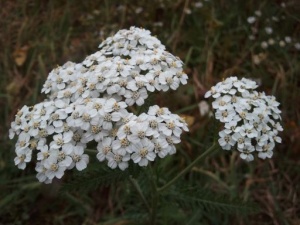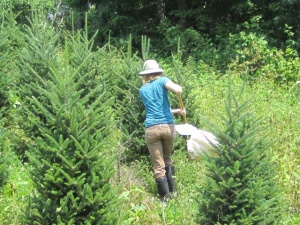Documenting Biodiversity
go.ncsu.edu/readext?295886
en Español / em Português
El inglés es el idioma de control de esta página. En la medida en que haya algún conflicto entre la traducción al inglés y la traducción, el inglés prevalece.
Al hacer clic en el enlace de traducción se activa un servicio de traducción gratuito para convertir la página al español. Al igual que con cualquier traducción por Internet, la conversión no es sensible al contexto y puede que no traduzca el texto en su significado original. NC State Extension no garantiza la exactitud del texto traducido. Por favor, tenga en cuenta que algunas aplicaciones y/o servicios pueden no funcionar como se espera cuando se traducen.
Português
Inglês é o idioma de controle desta página. Na medida que haja algum conflito entre o texto original em Inglês e a tradução, o Inglês prevalece.
Ao clicar no link de tradução, um serviço gratuito de tradução será ativado para converter a página para o Português. Como em qualquer tradução pela internet, a conversão não é sensivel ao contexto e pode não ocorrer a tradução para o significado orginal. O serviço de Extensão da Carolina do Norte (NC State Extension) não garante a exatidão do texto traduzido. Por favor, observe que algumas funções ou serviços podem não funcionar como esperado após a tradução.
English
English is the controlling language of this page. To the extent there is any conflict between the English text and the translation, English controls.
Clicking on the translation link activates a free translation service to convert the page to Spanish. As with any Internet translation, the conversion is not context-sensitive and may not translate the text to its original meaning. NC State Extension does not guarantee the accuracy of the translated text. Please note that some applications and/or services may not function as expected when translated.
Collapse ▲Details of Pollinator Study
Study objectives. The pollinator study was started in July 2012 by Dr. Jill R. Sidebottom with North Carolina State University, and continued through June 2013. It was funded in part through a grant from the North Carolina Christmas Tree Association.
The objectives of the study were to:
- Document the diversity of plants in groundcovers and field borders in Fraser fir Christmas tree fields and observe when these are flowering. Why is this important? It’s the flowering plants that will bring in the pollinators and many of the predators.
- Observe when pollinators are actively foraging with particular interest in honey bees and bumble bees.
- Learn how natural predators are utilizing flowers in groundcovers.
Farm selection. Six farms were chosen in five Christmas tree producing counties — Alleghany, Ashe, Avery, Mitchell, and Watauga based on interest by the grower and the presence of mature groundcovers. A 1/2 acre block of trees was selected at each farm. Trees at the different farms ranged from 4 to 7 feet. Some blocks were fully stocked and others had had trees harvested from them.
The Christmas tree growers were told to keep their production practices the same. That way a range of field conditions could be followed. Groundcover management varied between the different farms. Though all relied on Roundup for their primary weed control, they varied as to when applications were made and at what rate. Growers were asked to keep track of their pesticide use to determine how different factors ended up affecting pollinators.
Farms were visited every 2 to 3 weeks from July through October 2012 and April through June 2013. Each farm was visited 11 times for a total of 66 field observations.
Photographs of the six field sites.
Ground Cover Biodiversity
 Cataloging plants in groundcovers. The first step was to determine what plants were in each field. Plant identifications were made during an initial field visit. As more plants were observed, they were added to the list.
Cataloging plants in groundcovers. The first step was to determine what plants were in each field. Plant identifications were made during an initial field visit. As more plants were observed, they were added to the list.
Documenting flowering. Each time the field was visited, the plants that were flowering were noted. In addition, an estimate was made of the percentage of the ground cover occupied by that flowering species. Some plants such as white clover might make up 90% or more of the groundcover, but may only be actively flowering in a small portion. Only the flowering portion of the ground cover was recorded. Since some plants are tall and others short, the percentage sometimes exceeded 100%.
Observing Pollinators

During each field visit, pollinators were observed while walking through the fields. In addition, pollinators in groundcovers were sampled with a sweep net with three separate samples collected on each observation date. In each of three samples, the net was swept through the groundcover 10 times while walking through the field or along field roads. Field borders were not included in these samples, though observations of pollinators, especially butterflies, were made here as well. The insects that were caught were emptied into a plastic bag and frozen. After several days, any pollinators or predators important to Christmas tree pests were placed in alcohol or pinned for subsequent identification.
Back to The Pollinator Study Main Page


